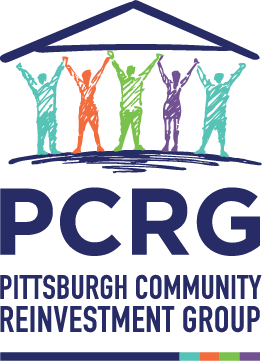OVERVIEW
Since its inception in 1988, PCRG has been dedicated to advocating for financial institutions to reinvest in communities — and served as the principal source for resolving the Community Reinvestment Act-related issues in the region.
PCRG acts as a conduit between financial institutions and communities throughout the greater Pittsburgh area. Through Community Development Advisory Groups, we’ve levied more than $1 billion to low- and moderate-income as well as minority neighborhoods.
-
The CRA is a piece of federal legislation enacted in 1977 to regulate the activities of federally insured commercial banks and savings associations.
It holds those institutions accountable to meet the credit needs of all communities — across demographics and geographies and seeks to address and deter discrimination in loans made to individuals from low- and moderate-income neighborhoods.
The CRA was enacted to combat decades of redlining — a racist practice of mapping lines in red ink around areas with sizable Black populations to deter mortgage lenders, effectively isolating Black people in areas that would suffer from disinvestment.
The effects of redlining, which dates back to the 1930s, can be seen in the markets and fabric of Pittsburgh’s neighborhoods today, about 80 years later. The CRA is both a way to enforce equitable lending practices, as well as a tool to forge partnerships between community groups and banks to create reinvestment opportunities in neighborhoods.
-
The CRA requires depository institutions — any and every federally insured bank that accepts deposits from the general public — to report all data on lending activities to the federal government. It also mandates periodic evaluation of their records by one of three federal regulatory agencies: the Federal Deposit Insurance Corporation, or FDIC, Federal Reserve Board, or FRB, and the Office of the Comptroller of the Currency, or OCC.
This assessment, which relies heavily on the efficacy of the reported data, acts as a three-pronged test or report card of the financial institutions’ investments and activities across their respective service areas. The evaluation is also used to determine if they offer credit in a manner consistent with safe and sound banking practices in all communities in which they are chartered to do business.
-
Performance tests are broken into three categories. The CRA dictates that a bank’s total asset size determines how the below evaluations are weighed and how they factor into a financial institution’s overall rating. The testing areas are:
Lending: evaluates an institution’s loan and deposit disclosures to determine its rate of, primarily, home mortgage approvals, denials, and originations and assess consistency or disparities in lending patterns — including how they compare to other institutions in a geographic area.
Investment: assesses how much money is involved, the complexity and responsiveness to credit and community development needs. It also looks at the number of special investments made in comparison to regular, private investors.
Service: analyzes the extent of an institution’s community outreach, including to community development organizations. This also examines how, if at all, an institution volunteers both its name and financial expertise to the community its located within — and looks at what innovative retail banking services it offers to meet the area’s specific needs.
CRA MODERNIZATION
Three major federal agencies made a final ruling on Oct. 24, 2023, to adopt proposed changes to modernize the CRA. The regulatory entities — the FDIC, FRB, and OCC — united to propose the significant rule changes in May 2022. The effort aims to bring the CRA into the modern era, increase equity in lending practices and hold banking institutions more accountable.
-
The CRA hasn't seen substantial updates since 1995, but now there's a chance to change that.
The new rules aim to make sure banks better serve low- and moderate-income, or LMI, communities and address credit access disparities.
The new rule also addresses the evolution of online banking in expanding assessments of financial institutions to include their performances in areas where they don’t have a brick-and-mortar presence.
-
Bank Size Redefined: New asset-based thresholds will determine bank sizes.
Tailored Testing: Testing frameworks will be customized for small, intermediate, and large banks.
Community Development: Expanded definitions and criteria for community development activities.
Retail-Lending Focus: Large banks with significant market activity beyond their branches will have a new "retail-lending assessment area."
Improved Data: Updated data collection, reporting, and disclosure requirements for large banks.

